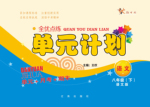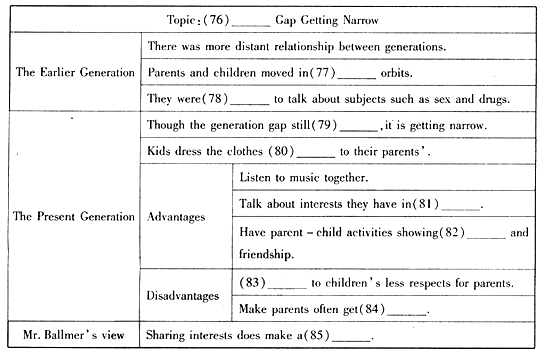题目内容
Hisparents provided him ________ 4000 dollars ________ his education every year.
- A.with; for
- B.for; with
- C.by; on
- D.to; in
A
provide somebody with something for
provide somebody with something for

练习册系列答案
 全优点练单元计划系列答案
全优点练单元计划系列答案
相关题目
| 完形填空。 | |||
| James's New Bicycle James shook his money box again. Nothing! He carefully__1__the coins that lay on the bed,$24.52 was all that he had. The bicycle he wanted was al least $90! ____2____on earth was hegoing to get the ___3___of the money? He knew that his fnriends all had bicycles. It was ___4____ to hangaround with people when you were the only one without wheels. Hethought about what he could do. There was no ____5____ asking hisparents,for he knew they had no money to ___6____ There was only one way to get money ,and that was to____7____ it.He would have to find a job. ___8____who would hire him and whatcould he do? He decided to ask Mr Clay for advice ,who usually had____9___on most things. "Well,you can start right here, "said Mr Clay."My windowsneed cleaning and my car needs washing." That was the ___10__ of James' odd-job (零工)business. Forthree months he worked every day after finishing bis homework. He was amazed by the ___11____of jobs that people found for him to do.He took dogs and babies for walks, cleared out cupboards, and mended books.He lost count of the ___12____of cars he washed andwindows he cleaned,but the ___13___increased and he knew that hewould soon have ___14___for the bicycle he longed for. The day __15__came when James counted his money andfound $94.32. He __16___no time and went down to the shop topick up the bicycle he wanted. He rode ___17___ home, lookingforward to showing his new bicycle to his friends. It had been hard ___18___for the money,but James knew that he valued his bicycle far more ___19___he had bought it with his own money.He had __20___what he thought was impossible,and that was worth even more than the bicycle. | |||
| ( )1.A. cleaned ( )2.A.How ( )3.A.amount ( )4.A. brave ( )5.A. point ( )6.A. split ( )7.A. borrow ( )8.A. Or ( )9.A. decisions ( )10.A. beginning ( )11.A. similarity ( )12.A. brand ( )13.A. effort ( )14.A. all ( )15.A. finally ( )16.A. gave ( )17.A. patiently ( )18.A. applying ( )19.A. since ( )20.A. deserved |
B. covered B. Why B. part B. hard B. reason B. spend B. earn B. So B. experience B. introduction B. quality B. number B. pressure B. enough B. instantly B. left B. proudly B. asking B. if B. benefited |
C. counted C. Who C. sum C. smart C. result C. spare C. raise C. For C. opinions C. requirement C. suitability C. size C. money C. much C. normally C. took C. silently C. looking C. than C. achieved |
D. checked D. What D. rest D. unfair D. right D. save D. collect D. But D. knowledge D. opening D. variety D. type D. trouble D. some D. regularly D. wasted D. tiredly D. working D. though D. learned |
